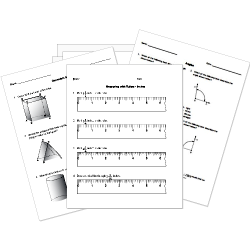Projectile Motion
Projectile Motion
This lesson aligns with Next Generation Science Standards (NGSS) PS2.B
Introduction
A man moving along a straight road is an example of one-dimensional motion as he covers a distance in one dimension only i.e. along the x-axis. But what about the motion of a tennis ball when it is thrown from a certain height? The ball moves forward as well as downwards i.e. moving in horizontal and vertical planes. Thus, the ball covers a distance in two dimensions. This two-dimensional motion of the ball is an example of projectile motion. In this article, we will talk about projectile, projectile motion, its components, and the equation for projectile motion.
Projectile and Projectile Motion
Any object that is thrown obliquely, making an angle with the horizontal, close to the earth’s surface follows a curved path having a vertical component and a horizontal component. The curved path is a result of constant acceleration due to gravitational force or gravity. Such an object is called a projectile, and its motion is called projectile motion. The path followed by such an object is called the Trajectory of a projectile.
Let’s consider basketball. The player aims to score a basketball, he jumps a little from the ground and throws a ball in the basket. If we observe, the ball moves in a horizontal direction while rising in height at the same time. We conclude that the projectile motion is existing here because both the horizontal and vertical motion is present.

Similarly, when an archer pulls an arrow and releases it at a particular angle, the arrow moves both in the horizontal and vertical directions simultaneously. The arrow moves in the forward direction by following the parabolic path which can be easily observed with the human eye. This demonstrates the projectile motion.

Components of Projectile Motion
Suppose a ball is thrown from a certain height. The ball travels downwards as well as forwards
until it strikes the ground.
Horizontal Component
When the ball leaves the block, its velocity at that instant is completely horizontal. Let this velocity be vx. According to Newton’s law of motion, there will be no acceleration in the absence of the force. During this flight of the ball, the only force acting on it is gravitational force i.e. in a vertical plane. As no force is acting on it in a horizontal plane, the ball will move with a uniform horizontal velocity. So the horizontal component comprises the ball moving with uniform velocity i.e. vx, and the horizontal distance x covered by the ball is given as;
x=vx×t
where x is the horizontal distance covered by the ball, vxis uniform horizontal velocity and t is the time of flight.
Vertical ComponentThe vertical motion of the ball is under constant acceleration due to gravity i.e. g. this motion is similar to the motion of a freely falling object. Hence the vertical distance covered by the ball is given as;

where y is the vertical distance covered by the ball,g is the gravitational acceleration and t is the time of flight.
An object doesn't need to be thrown in a horizontal direction with some initial velocity. A basketball thrown by a player; a ball hit with the bat and a missile fired from a launching pad, all making some angle with the horizontal, are examples of projectile motion.
Equations of Projectile Motion
A projectile motion consists of;
- Height of Projectile i.e. vertical distance
- Range of Projectile i.e. horizontal distance
- Time of flight
If vi is the initial velocity of the projectile and θ is the angle that it makes with the horizontal, then the following equations are used to find out the above components of projectile motion.
Height of Projectile
The height of projectile [math]h[math] is given as;
[memberimg]0975d3f36bc49a5f3aca9fbecdf95c13[/memberimg]
Range of Projectile
The range of projectile R is given as;

Time of Flight
The time of flight t is given as;

Summary
- Projectile motion is a two-dimensional motion comprising horizontal and vertical components.
- The horizontal component is due to horizontal velocity while the vertical component is due to constant gravitational acceleration.
- Gravitational acceleration also affects the horizontal component as evident from the equation for the range of a projectile.
- Examples of Projectile motion include the motion of basketball, tennis balls, football, ballistic missile, etc.
Related Worksheets:













